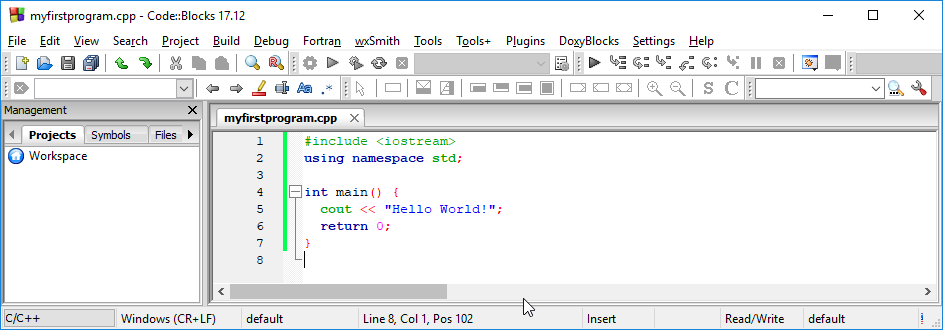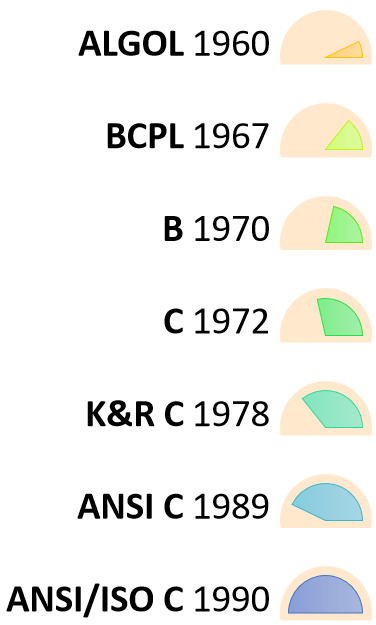POPULAR STREET FOOD IN JODHPUR
The land of Marwar or Jodhpur is one of India’s famous tourist destination and the second-largest city in Rajasthan. With its narrow streets, slopey terrain, Havelis, and sea blue houses, this dusty desert city has expanded over the years. The old and new Jodhpur now exist together separated by a wall. The rich history adds character to this blue city.
Apart from its rich history, its contribution to the fashion industry, its maze of bright blue houses, street food in Jodhpur is also very popular among tourists and locals. The generous serving of ghee with almost every meal and snack is one thing that stands out. Jodhpur offers you a combination of spicy street food and delectable desserts and is definitely the one place you need to check off your list if you’re a foodie.
So whenever you travel here, make sure you snack on these delicious Marwari treats while you are checking out the city’s many attractions. Here is our list of 12 amazing street food in Jodhpur you must enjoy.
12 Delicious Street Food in Jodhpur For Every Foodie’s Delight
1. The Makhaniya Lassi
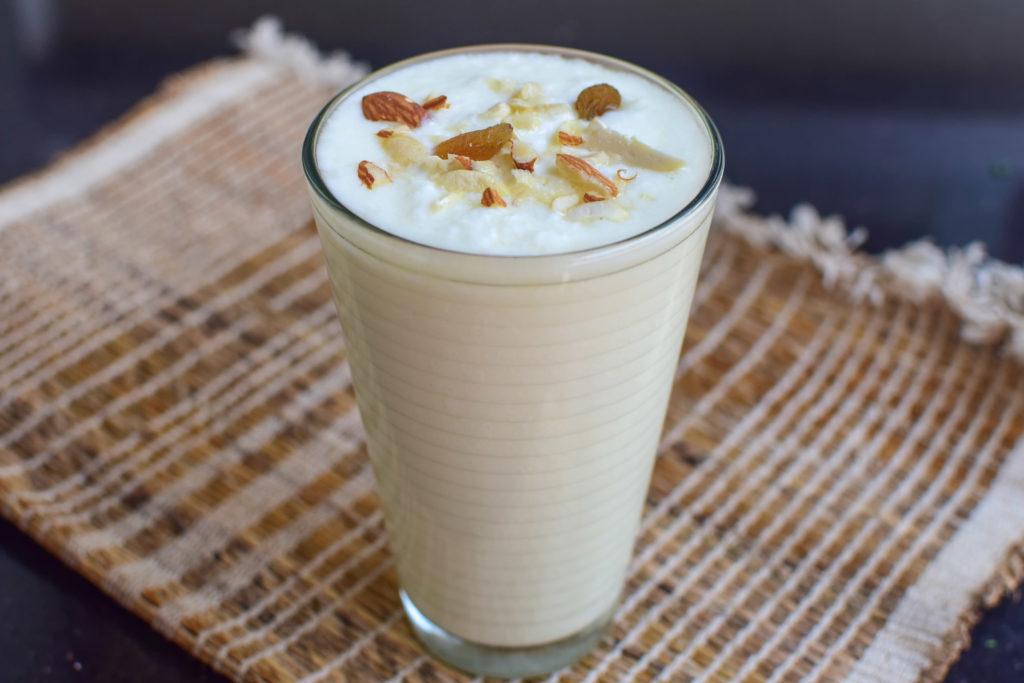
12 P
One of the best street food in Jodhpur, the Makhaniya Lassi is among the many culinary delights offered by this city. It is a thick creamy concoction of buttermilk flavoured with saffron, cardamom, rose water among other things. It is topped with a big dollop of hung curd and yoghurt cream. This rich and flavourful drink is perfect to cool your body after a stroll in the hot dusty streets of Jodhpur. You’ll have to eat this lassi with a spoon as it too thick to drink.
2. Dal Bati Churma
![Dal Bati Churma [Source - Patrika]](https://static-blog.treebo.com/wp-content/uploads/2021/02/Dal-bati.jpg)
3. Dahi Chaat
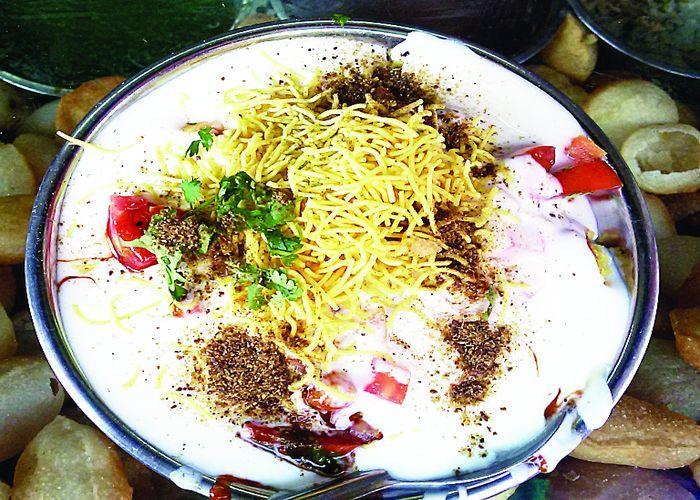
4. Kadhi Kachhori /pyaaz kachori
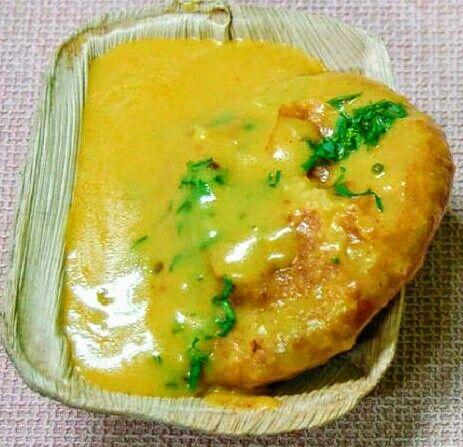
5. Pani Patasa

Pani Patasa is just another name for Pani Puri in Rajasthan. Round hollow crispy fritters are filled with flavoured boiled potato, chickpea or gram. This is then filled with Pani which is dry mango, or tamarind or mint leaf flavoured water. It is tangy, spicy and sour with a hint of sweet. These delightful little Patasas are one way to treat your taste buds to a party. Definitely a must-eat street food in Jodhpur.
6. Malai Ghevar
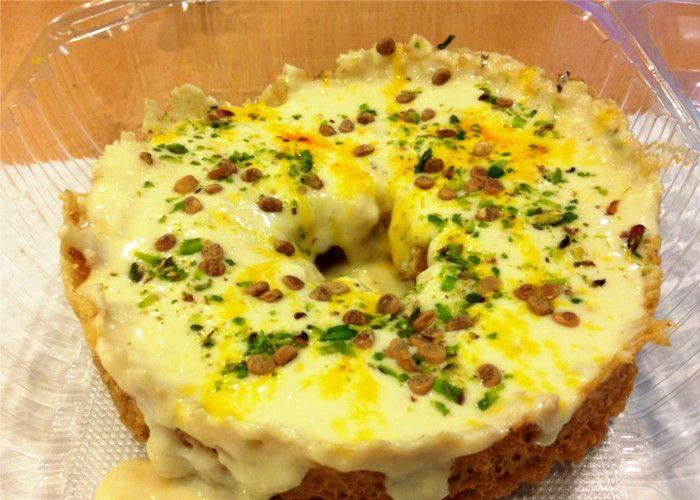
Ghevar is a sweet doughnut-shaped cake made of all-purpose flour which is served with Chasni i.e. sugar syrup. Among the different varieties of Ghevar like the plain ghevar, mawa ghevar, and the malai ghevar, the malai ghevar is the most popular in Jodhpur. This Rajasthani delicacy is mostly prepared during the Teej festival but is available in select places throughout the year. It will surely satiate your sweet tooth and you’ll soon be going for more. Don’t forget to try this famous street food in Jodhpur while visiting this city.
7. Mirchi Bada

8. Matka Kulfi
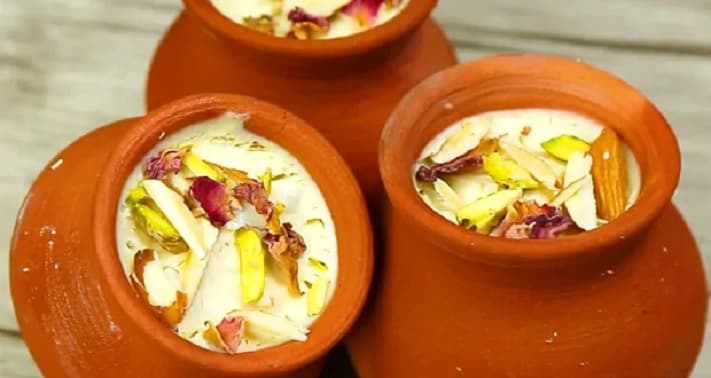
9. Shahi Samosa
![Shahi Samosa [Source - Patrika]](https://static-blog.treebo.com/wp-content/uploads/2021/02/Shahi-Samosa.jpg)
10. Malai Roti
![Malai Roti [Source - Patrika]](https://static-blog.treebo.com/wp-content/uploads/2021/02/Malai-Roti.jpg)
11. Gulab Halwa

12. Sev Tamatar
Sev Tamatar is a popular Rajasthani sweet and sour curry and also an amazing street food in Jodhpur. It is prepared with tomato, onion, sev, along with some Indian spices and masala. Tangy tomato curry is garnished with a generous serving of besan sev, onion, and coriander. You can find this humble Rajasthani accompaniment served with any Indian flatbread in all the best places to eat in Jodhpur.
We come to the end of our list of 12 popular street food in Jodhpur. If you loved reading about them, we would insist you travel to all the important places to visit in Jodhpur and enjoy these delicacies as well

.jpg)

.jpg?width=300&height=300)




.jpg?width=300&height=300)



